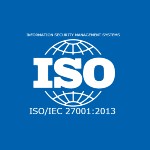How to build a CI culture in your organization
Posted by |
Competitive intelligence (CI) is most effective when it is built into the way an organization operates. Without a clear culture, intelligence can become fragmented, be applied inconsistently, or treated as a one-off exercise. When a CI mindset is embedded in people, insights are collected systematically, shared across teams, and used to support planning and decision-making at every level.
These themes were the focus of our webinar Building a CI Culture in Your Organization, where Magdalena Popesco, Head of Global Competitive Intelligence at CSL Behring, Vishal Sapru, Senior Manager, Competitive Intelligence, Global Strategic Marketing at Abbott Laboratories, and Shiv Nayyar, Vice President of Consulting Services at Fuld, shared their perspectives.
Watch the replay
The session highlighted practical steps for CI professionals working to embed intelligence as an organizational capability that informs behavior, strengthens collaboration, and improves performance.
Build the foundations of a CI culture
CI culture goes beyond dashboards, databases, or reports. It creates an environment where people across the organization understand competitors and market dynamics, and where decisions are based on shared intelligence rather than isolated knowledge.
Employees in sales, marketing, product, and strategy roles often pick up signals from the market. The culture becomes stronger when those signals are shared, debated, and turned into insights that shape behavior. Trust and collaboration are essential to ensure intelligence is both collected and applied.
“CI is not a toolset, it is a mindset that shapes how an organization thinks, behaves, and decides.”
Magdalena Popesco, Head of Global Competitive Intelligence at CSL Behring
Even with advanced tools, many organizations struggle. Common challenges include:
- Over-reliance on systems that provide data but lack interpretation
- Confusion over how CI differs from market research
- Functional silos that block insights from being shared
- Weak leadership sponsorship that reduces CI to a “nice-to-have”
Addressing these challenges requires a clear definition of CI’s role and active sponsorship from leadership.
Put strategies into practice
Successful CI programs begin with understanding stakeholders and their priorities. Early steps include:
- Mapping business clients and defining what success looks like for them
- Listening to needs before presenting outputs
- Finding champions who will advocate for CI across functions
- Importance of quick wins. A one-slide summary that links events to implications often has more impact than a lengthy report.
- Embedding CI in existing processes to make it more durable, for example:
- Competitor profiles updated quarterly
- Sales battlecards refreshed monthly
- Playbooks revisited annually
By making CI part of the operating rhythm, organizations prevent it from becoming an occasional add-on.
Make leadership a driver of CI
Leadership behavior is decisive. Executives who rely on CI in board discussions, ask competitive questions, and cite intelligence in strategy meetings to set the tone. It is these champions at the top that validate CI’s importance and ensure it is prioritized.
It is essential to understand leadership preferences. Some want concise visuals, others prefer one-page summaries, while others require detailed analysis. Tailoring outputs to these styles builds trust and influence.
“When leaders walk the talk, CI turns from polite wallpaper into a strategic enabler.”
Vishal Sapru, Senior Manager, Competitive Intelligence at Abbott Laboratories
Engagement is reinforced through:
- Standardized templates for alerts, profiles, and battlecards
- Tailored outputs by audience, from short decks for executives to detailed reports for product teams
- Multi-channel communication such as newsletters, live briefings, and conference debriefs
- Closing the loop by asking how intelligence shaped decisions
Storytelling is more effective than a data dump. Strong CI communication explains not only what is happening but also why it matters and how the organization should respond.
Address resistance with patience and proof
Resistance is common. It may stem from past disappointments, unclear expectations, or a belief that existing knowledge is sufficient. The best response is openness, not defensiveness.
Practical steps include:
- Listening carefully to concerns and acknowledging limits
- Linking outputs directly to urgent, visible business needs
- Delivering quick, high value wins to build credibility
- Using champions to advocate for CI with skeptical audiences
“Treat resistance like a software bug. Expect it, diagnose it, and fix it with targeted patches and quick wins.”
Vishal Sapru, Senior Manager, Competitive Intelligence at Abbott Laboratories
Patience and persistence are essential. Trust builds over time as CI consistently proves useful.
Embed CI into processes at scale
For CI to endure, it must be integrated into core processes. Intelligence should appear in:
- Quarterly business reviews
- Product roadmaps and planning sessions
- Leadership updates and board discussions
A clear cadence helps keep intelligence top of mind:
- Weekly highlights for awareness
- Monthly competitor reviews to track developments
- Quarterly strategy updates that connect external shifts to internal choices
CI professionals should also take part in planning meetings. Even as observers, they gain visibility into strategic priorities and can align outputs with upcoming decisions.
Define the operating model and governance
Scaling CI requires clear ownership. Many organizations benefit from a centralized function that provides a single source of truth. If CI sits within one function, cross-functional governance is essential to avoid duplication and ensure consistency.
Key practices include:
- A harmonized taxonomy across functions to standardize terminology
- Processes for capturing field intelligence systematically
- Governance mechanisms that link CI efforts across sales, marketing, product, and other areas
Measure impact, not output
Counting pages written or reports downloaded rarely demonstrates value. More meaningful measures link CI directly to outcomes, such as:
- Decisions influenced by intelligence
- Deals won or retained with CI support
- Risks avoided through early warning
- Faster cycle times for strategic decisions
- Visible adoption by senior leaders and cross-functional teams
“Busy is not value. Prove CI by the decisions it changes and the risks it prevents.”
Magdalena Popesco, Head of Global Competitive Intelligence at CSL Behring
Engagement is another key measure, whether teams are citing CI deliverables, accessing dashboards, or requesting deeper analysis. Efficiency also matters, such as applying insights from one market across multiple business departments.
Building a CI culture is not about producing more reports or investing in more tools. It is about embedding intelligence into the organization’s fabric, so it supports both everyday decisions and long-term strategy. Success comes from early credibility, visible leadership sponsorship, tailored communication, and disciplined integration into business processes.
Organizations that measure CI by the decisions it influences, the deals it supports, and the risks it helps avoid will establish it as a lasting source of advantage.
Watch the full webinar replay here.
Fuld can help you build a CI culture in your organization. Get in touch to learn how.
Tags: Business & Industry Research, Competitive Strategy, competitive strategy consulting, Healthcare & Life Sciences, Pharmaceuticals



















